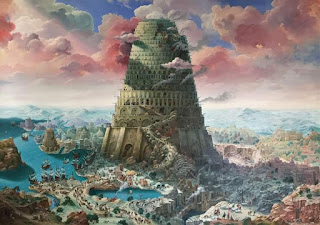"Acts of heroism were as common as the multitude of flies, mosquitoes, and the dying.” - Ted R. Williams, WWII veteran and Bataan Death March survivor
"Acts of heroism were as common as the multitude of flies, mosquitoes, and the dying.” - Ted R. Williams, WWII veteran and Bataan Death March survivor
From Corregidor and Bataan to Inchon and Seoul . . . a life of service and sacrifice.
On April 9, 1942, after fighting for months against overwhelming Japanese forces at Bataan and Corregidor in the Philippines, 75,000 American soldiers, sailors, Marines, and their Filipino allies - out of ammo, food, and water and with no hope of rescue - surrendered.
Among the captured Americans was Corporal John F. Hamrick. Born on January 21, 1920, the Oklahoma native, who had enlisted in the Marines at 16 after lying to his recruiter about his age, was about to begin one of the worst nightmares of the Pacific Campaign: the Bataan Death March.
Already weak and disease-ridden from two wounds and months without adequate food, water, or medicine, the 22-year-old 4th Marine Regiment corporal and his buddies were told to march, not fall behind, and do exactly what the cruel and merciless Japanese guards told them.
During the 85-mile journey, Hamrick and thousands of other Americans were beaten, tortured, and starved.
Those who were too sick to continue were left on the side of the road to die. Many were bayoneted and killed, their mutilated bodies put on display as an example of what would happen to those who couldn’t keep up.
"We did not feel defeated, only betrayed,” a fellow Marine said years later. "This led to our dogged determination and fueled our desire to survive.”
Hamrick and his comrades made it through the brutal forced march, but more than 500 Americans and approximately 10,000 Filipinos weren’t as lucky. They perished in the tortuous trek that would later be judged a Japanese war crime.
Over the next three years, the young Marine who had served in Shanghai prior to the war endured unimaginable hardships and cruelties of the hellish POW camps in the Philippines and Japan. Suffering from disease, starvation, and the constant threat of torture and death, Hamrick miraculously survived the ordeal and was liberated in September 1945.
He had made it through one of the most horrific episodes of World War II.
Postscript:
John Hamrick returned to the States, stayed in the Marines, and in 1947 was commissioned a 2nd Lieutenant.
When the Korean War broke out in the summer of 1950, Hamrick, by then a platoon leader with 2nd Battalion, 1st Marine Regiment, was sent to Korea.
On September 25, 1950, the Marine lieutenant was killed in action near Seoul. There are two conflicting accounts of his death, however. One says that he was shot by a sniper and died from his wound hours later, and the other says he was shot by an accidental discharge from a BAR (Browning Automatic Rifle) and died on the way to a battalion aid station.
What exactly happened may never be known, but the man who had earned two Purple Hearts, survived the Bataan Death March, endured three years in Japanese POW camps, and fought at Inchon and Seoul was dead.
He was buried at Golden Gate National Cemetery, in San Bruno, California.
Today we pay tribute to John Hamrick, his family, and all the brave men who served, sacrificed, and died in WWII and Korea. We will never forget you!













Comments
Post a Comment